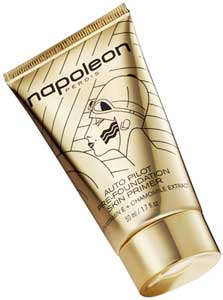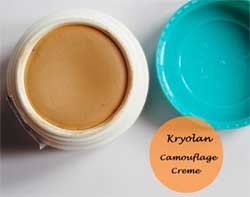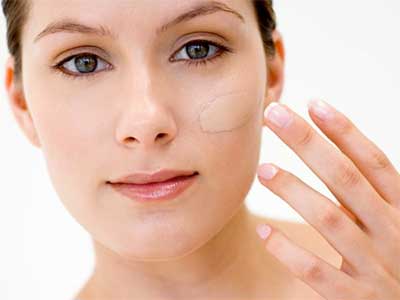Make-up Tips
Foundation

Foundation
Like building a house, getting the foundations right is the most important part.
Priming the skinIt's a crime not to prime! It is strongly recommended that the skin be primed first before applying foundation. The Napoleon Perdis Primer is a good product for this purpose. Your liquid foundation will then go on more smoothly and give a nicer finish. |

|
Selecting the correct foundationWhen it comes to buying your first bottle of liquid foundation, do not take a wild guess at what you think is the correct colour for you (like I did). In most department stores and chemists, they have small tester bottles to sample and to find your right colour. Apply a little of the most likely ones on your cheek, until you find on that matches your skin colour as closely as possible. Do not feel shy about asking the sales staff for advice about what would suit you best. Most experienced staff have served many cross-dressers before and are usually very comfortable dealing with us whether we are in boy-mode or enfemme. If you have a supportive female in your life, take her along for advice. You can use either:
You may need to experiment to see which suits you best. Liquid foundation tends to give a better coverage, while mineral foundation is easier to apply. |
 
|
Applying foundationThis is the part of the make-up routine that I spend the most time on to get it right. The aim is to apply the foundation as smoothly and as evenly as possible, using the least amount necessary to cover the skin. Less is Best. Empty a small amount from the bottle onto your left wrist (if you are right-handed), so that it is easily accessible. There are several ways to apply liquid foundation:
|
Start applying foundation from the middle of the face and slowly work outwards. Blend the foundation into the hairline, the ears and down and around the sides of the neck, and finally onto your upper chest if this is uncovered. The aim is that there be no obvious line of demarkation where the make-up finishes. Take care to apply foundation in any creases and around the nostrils. Some beauticians recommend using foundation over the eyelids and lips, as eyeshadow and lipstick will stick better over foundation. Others strongly recommend not doing this. I do not do this anymore. After you have covered your face go back and carefully smooth out any uneven spots or smears.
|
ConcealerSelect a concealer that is the same colour as your foundation. This is useful for trouble spots like darkness under the eyes. You will need to use only tiny amounts of concealer. Dab a few small spots in the areas needing attention, then gently blend it. I use a a small concealer brush for the job. |
Face PowderAgain, select a colour that is the same as, or similar to, your foundation. The function of face powder is to "set" the foundation, not to act as a cover. It is helpful for touch ups during the evening to remove any shine that develops. Again Less is Best. You can apply face powder with either the powder puff or a large soft brush. I prefer the latter for a more even application. |
Beard coverFor those cursed with thick dark beards, close shaving and foundation may not be enough to hide a beard. Special beard covers, such as "Kryolan Dermacolor Concealer", are available, usually from theatrical make-up suppliers. They are typically reddish or orange in colour to counteract the blue of a dark beard. The Showface website sells this range of products.  |
